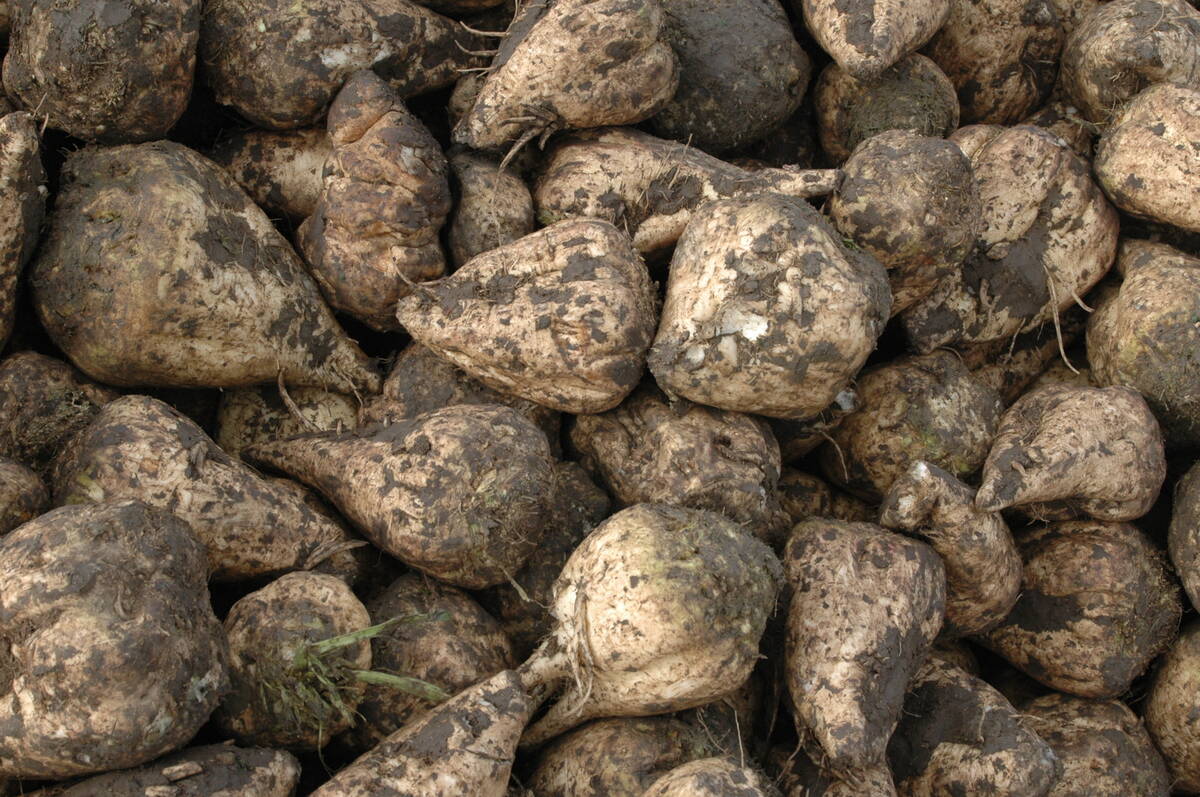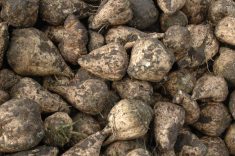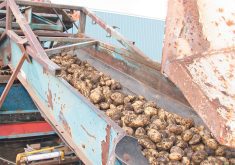CHICAGO, Ill. (Reuters) — For years, sugar beets were a lifeline for American farmers. More than half of domestically produced sugar comes from the white-fleshed root crops, and robust demand from the world’s top sugar-consuming nation has shielded growers from more volatile crops such as corn, soybeans and wheat.
But not this year.
Related story in this issue: Canada the sole G7 nation without a Domestic Sugar Policy to aid local sugar beet production
Read Also

U.S. government investigates high input costs
The USDA and DOJ are investigating high input costs, but nothing is happening in Canada.
A dramatic drop in U.S. consumption and excess imports have ballooned stockpiles.
Refined beet sugar prices are down 33 per cent from a year ago, their lowest level since 2019, and a sugar supply glut is projected to last through at least 2026.
The culprit? Americans are simply eating less sugar. Consumption started to decline in the 1990s as artificial sweeteners grew in popularity.
However, that long-term trend collided with inflation, which has hit spending on sweets and candy, and the rising popularity of GLP-1 weight loss drugs, which are reducing spending on food, but particularly on sweets.
Nearly nine per cent of the U.S. population is now taking GLP-1s such as Wegovy and Ozempic, and they are spending six per cent less on candy and chocolate and 10 per cent less on sweet bakery items, according to a study by OC&C Strategy Consultants.
Further, health secretary Robert F. Kennedy Jr. called sugar and the ultra-processed foods that contain it “poison” in April. His Make America Healthy Again commission’s first report in May referenced added sugars and sugar consumption at least 22 times, linking it to maladies such as diabetes and obesity in children.
“All of a sudden consumers were starting to buy less food at the grocery store, so food manufacturing companies needed less sugar,” said Robert Johansson, former U.S. Department of Agriculture chief economist and current director of economics and policy analysis for the American Sugar Alliance, an industry group that advocates for the beet and cane sugar industries.
Farmers this year planted their smallest sugar beet acreage since 1982.
One near-century-old plant in Brawley, California, owned by the Southern Minnesota Beet Sugar Cooperative, will shut down after processing its last crop this year, the company said, blaming import competition, post-pandemic inflation, weak sugar prices and “uncertainty in the macroeconomic environment.”
Sugar beet growers maintain that consumption of sugar, in moderation, is healthy and that the MAHA commission’s focus should be on unnatural sweeteners.
“You need to consume it in moderation, just like anything else,” said Michigan farmer Clint Hagen.
“Our product’s natural. We’ll let the science dictate that.”
Hagen is tightening his belt in the face of likely financial losses from sugar beets this year, delaying needed equipment upgrades in hopes of surviving for another season.
However, cutting sugar beet production is not an option.
Like the majority of U.S. producers, his shares in the local farmer-owned sugar processing business require him to grow and deliver his quota of beets.
“If you’re sick and tired of sugar beets right now and you want out, you need to find somebody to buy those acres away from you,” he said.
Sugar is the most protected agricultural commodity in the United States. The government uses import controls, based on supply estimates and anticipated demand, to discourage cheaper foreign sugar from flooding the U.S. market. The controls also help ensure that American food manufacturers have enough to meet consumer demand.
Domestically produced sugar supplies around three-quarters of U.S. demand, roughly 54 per cent from sugar beets and the rest from sugar cane. Some 3,000 to 4,000 farms across the northern U.S. and the West Coast now cultivate sugar beets, with Minnesota and neighboring North Dakota representing nearly 60 per cent of all U.S. plantings.
The remainder of demand is supplied by imports from dozens of countries, including Brazil and the Philippines, under programs that grant low-tariff or duty-free access for limited volumes.
Hagen is harvesting his drought-hit crop near Utley, hoping to meet most of his production costs, which have swelled some 30 per cent in recent years.
Rising labour costs and fuel, pricey herbicides and costly fungicides to fight the yield-sapping cercospora leaf spot disease that chokes crops and thrives in Michigan’s humid climate drove his per-acre outlay to as much as $1,500, up to 25 per cent above average.
“Sugar beets require the most fertility, the most specialized equipment, the most crop care, fungicides, herbicides, all that type of stuff,” he said.
Hagen needed seven or eight fungicide applications this summer, up from three or four in the past, and many of the chemicals are imported, so tariffs have driven up prices.
In the heart of beet country, just 18 kilometres from “the world’s largest sugar beet” in Halstad, Minnesota, farmer Neil Rockstad is tuning up his trucks and equipment to prepare to harvest another bumper beet crop.
Normally beets are an economic cushion for his operation in Ada, Minnesota. They have been a bright spot as trade wars, foreign competition and rising costs dampen his profits on corn, soybeans and wheat, forcing him to rely more on crop insurance and government aid payments to pay bills.
Sugar beets need specialized equipment and time, making them costlier to grow than other row crops. As well, since many farm inputs such as fertilizer, machinery and parts are produced overseas, U.S. President Donald Trump’s tariff wars have driven costs even higher.

That means income from sugar beets may not cushion Rockstad from losses on other crops.
“Knowing that you put all that time and work into it and aren’t going to pull any profit out of it, but hopefully enough that you can stay in business for another season, yeah, it’s frustrating,” he said.
“There won’t be a lot of black ink at the end of this season.”
Further west in Idaho, the No. 3 sugar beet state, farmer Galen Lee is feeling similar pain.
“I think breakeven would be the best on sugar beets. And usually they’re the crop that helps carry the mortgage for everything else and pay the bills,” he said.
About one-fifth of his 1,300-acre farm is planted with sugar beets, with the remainder devoted to corn, alfalfa, asparagus and mint.
He rents a more-than-decade-old harvester to keep costs down. Buying a new European-built machine now would cost more than $1 million, up from around $750,000 five years ago, due in part to import tariffs.
Crop insurance and government aid payments have helped offset some losses in past years, but future payments proposed by the White House are far from certain and they do not fully cover all production costs.
Were it not for more than a forecast $40 billion in government aid to farmers this year, U.S. farm incomes this year would be down for a third straight year.
“These programs are not designed to allow you to make a profit,” Lee said.
“They’re designed to keep you from bleeding quite so badly.”















